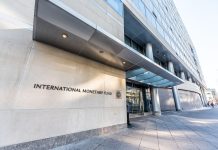ISLAMABAD: Rashakai Special Economic Zone (RSEZ) is rapidly progressing and is approaching completion. Delivery of utilities such as electricity and natural gas has been on time, with critical infrastructure being constructed, reports WealthPK.
The RSEZ will aid in driving economic activity, creating jobs, and generating foreign exchange.
’China and Pakistan have reiterated their commitment to encouraging their enterprises to establish relations with Pakistan’s provincial Boards of Investment (BOIs) and participate in SEZs. Gwadar Free Zone’s first phase, covering 60 acres of land, is now functioning, while the second phase, covering 2,200 acres, is under construction.
The RSEZ will usher in a new era of economic development, said a senior official of the Board of Investment (BOL) while speaking to the media. He emphasized that Rashakai Economic Zone’s completion will encourage international investment and provide sufficient facilities for foreign businesses.
In order to transform the trade corridor into a true economic corridor, the BOI facilitated the signing of a quad-partite development agreement for the development of the first CPEC, RSEZ in KP, he said. The BOI works as the secretariat for SEZs and industrial cooperation under the CPEC and as a party to all SEZ development agreements on behalf of the federal government. RSEZ is a showpiece initiative within the CPEC framework for industrial cooperation.
China Road and Bridge Corporation (CRBC) and Khyber Pakhtunkhwa Economic Zones Development & Management Company (KPEZDMC) collaborated to develop the 1000-acre RSEZ and implemented it through the Rashakai Special Economic Zone Development and Operations Company (RSEZDOC). It is 60 km west of Peshawar and 90 km east of Islamabad and is located on M1 near the CPEC route.
Rashakai is located 800 km north of Khunjerab Pass, 111.6 km south of Torkham border, and 39.6 km south of Azakhel Dry Port, giving it a unique strategic advantage in serving the consumer markets of Khyber Pakhtunkhwa, Punjab, Southwest China, Afghanistan, and Central Asia.
Processing and manufacturing, home appliances, pharmaceuticals, home building materials, automobile and parts, agriculture and horticulture, and wholesale market/specialty mills are the industrial clusters/sectors with the most investment feasibility based on the economic zone’s location advantage and resource pool.
Allama Iqbal Industrial City in Faisalabad, Punjab, Dhabeji SEZ in Sindh, Rashakai SEZ in Khyber Pakhtunkhwa, and Boston SEZ in Balochistan are among the five SEZs nominated under the CPEC that Pakistan is actively building. Another fast-track SEZ, the Gwadar Free Zone, is also under construction in Gwadar.
The RSEZ is expected to provide the Pakistani authorities with a significant economic incentive to pursue reforms aimed at improving the domestic business environment, governing behaviour, productive capacity, export base, and commercial attractiveness for new foreign investors. A new face of industrialization is also expected to result in job creation for the country’s large yet underemployed population. Measures to increase capacity through vocational and technical training would also help the local workforce catch up in terms of quality skills.
It will also assist in increasing trade generating potential, which is expected to encourage both countries to develop and strengthen their bilateral trade regimes. Furthermore, within SEZs, Pakistani enterprises would acquire the newest business and trade strategies from their Chinese counterparts.
The agreed-upon SEZs will give an opportunity to the Chinese and Pakistani businesses to collaborate further on technology. Finally, the proposed SEZs, which would be operationalized in the second phase of China Pakistan Economic Corridor, have the potential to establish links with China’s massive market; in this regard, the Chinese SEZs could create a strong and long-lasting business integration through trade and investment.
INP





